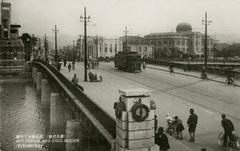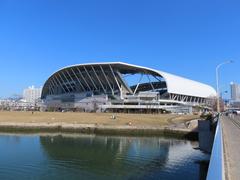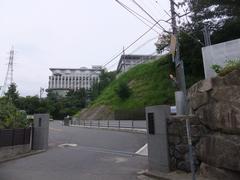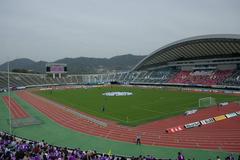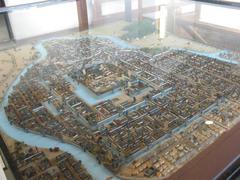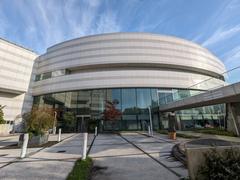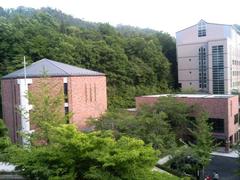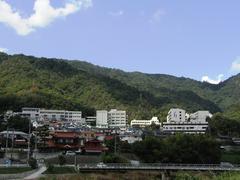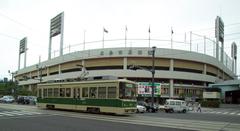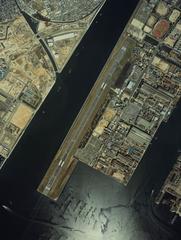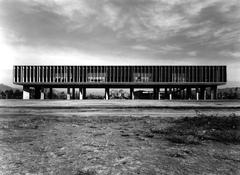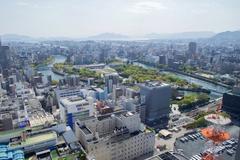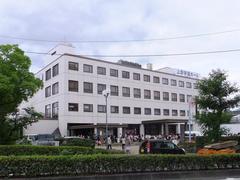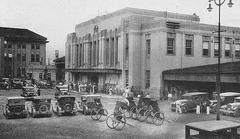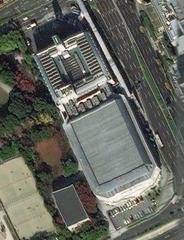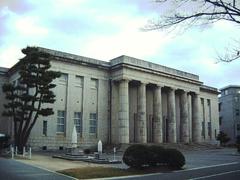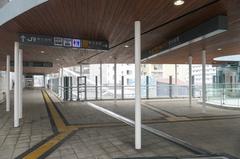
Fudō-In in Hiroshima, Japan: Visiting Hours, Tickets, and Historical Sites Guide
Date: 04/07/2025
Introduction
Fudō-In (不動院), set in the heart of Hiroshima, is a remarkable Shingon Buddhist temple with a rich spiritual, historical, and architectural legacy. Its origins trace back to the 8th century, with the current structure reflecting significant developments from the Kamakura and Muromachi periods. As one of Hiroshima’s most enduring cultural sites, Fudō-In is revered for surviving the atomic bombing of 1945 and for its Muromachi-period architecture, including the National Treasure-designated main hall (Kondō) with its distinctive irimoya-zukuri roof. The temple draws visitors interested in Japanese spirituality, architectural history, and Hiroshima’s layered past. This guide covers everything you need to know for your visit—practical details, cultural context, travel tips, and nearby attractions (Travel + Leisure Asia, Explore Hiroshima, Tourist in Japan, Japan Experience).
Table of Contents
- Introduction
- History and Cultural Significance
- Architectural Features
- Religious Practices and Symbolism
- Visiting Information
- Visitor Tips and Etiquette
- Nearby Attractions
- Frequently Asked Questions (FAQ)
- Conclusion
- References
History and Cultural Significance
Fudō-In’s origins are linked to the 8th century, with some traditions crediting its founding to the monk Gyoki. While the exact date is debated, temple records and statuary confirm its presence by the 11th century (Japan Experience). It flourished under the patronage of samurai and local leaders, serving as a spiritual center for centuries. The temple became affiliated with the Shingon sect during the 17th century.
A defining moment in its history came on August 6, 1945, when Fudō-In survived the atomic bombing of Hiroshima. Located approximately 3.5–4 km from the hypocenter, its key structures, especially the Kondō, remained standing—making the temple a symbol of resilience and hope for Hiroshima (Travel + Leisure Asia).
Architectural Features
Main Hall (Kondō)
The Kondō, constructed in 1540 and relocated to Hiroshima in the late 16th century, is Japan’s largest remaining example of the kara-yo (Chinese-style) architecture. Its irimoya-zukuri roof, robust wooden beams, and intricate carvings reflect Muromachi-period craftsmanship. The main hall is a designated National Treasure and features a painted ceiling with images of celestial beings and dragons (Tourist in Japan).
Gates and Statues
- Roumon Gate (Niomon Gate): Built in 1594, the imposing two-story gate features Nio guardian statues carved in 1294, exemplifying protective deities in Japanese temple architecture.
- Fudō Myō-ō Statue: The temple’s central deity, Fudō Myō-ō (“Immovable Wisdom King”), is enshrined here, symbolizing spiritual protection and transformation.
Bell Tower and Other Structures
- Bell Tower: Dating from 1321, it houses a large bronze Bonshō bell from Korea’s Goryeo Dynasty, reflecting historical cultural exchanges (Trundle Japan).
- Yakushi Nyorai Statue: The Medicine Buddha statue, attributed to 11th-century sculptor Jocho, is an Important Cultural Property.
- Ginkgo Tree: A centuries-old ginkgo tree that survived the atomic bombing stands as a living symbol of resilience.
Religious Practices and Symbolism
Fudō-In is a vital center for Shingon Buddhism in the Chūgoku region. Rituals such as goma (fire) ceremonies, incense offerings, and sutra chanting are held regularly. The temple also serves as a site for pacifying spirits, especially samurai who died in battle, reflecting Japan’s tradition of honoring the departed. Its dedication to Fudō Myō-ō and the presence of Yakushi Nyorai make it a place for seeking spiritual protection and healing (Explore Hiroshima).
Visiting Information
Opening Hours
- Standard Hours: 8:30 AM to 5:00 PM (last admission 4:30 PM)
- Variations: Hours may change during special events or holidays. Always check updated schedules on official tourism sites.
Admission and Tickets
- Temple Grounds: Free entry; no ticket required.
- Special Exhibitions or Tours: May require a small fee (typically around 300–500 yen for adults). Discounts for students, seniors, and groups are often available (Trundle Japan).
Accessibility
- Wheelchair Access: The main approach and gate are accessible; some gravel paths may be challenging. Ramps and assistance are available at key points.
- Facilities: Restrooms are available but basic. No on-site cafés or souvenir shops, but amenities are nearby at Fudōin-mae Station.
Directions and Transportation
- By Astram Line: Disembark at Fudōin-mae Station, then walk 5 minutes to the temple.
- From Hiroshima Station: Take the JR Kabe or Sanyo Line to Shin-Hakushima, transfer to the Astram Line, and get off at Fudōin-mae. Alternatively, board the Astram Line at Hondōri or Jōhoku Stations (Tourist in Japan).
- Cycling: Not permitted within temple grounds, but bicycle parking is available at the entrance.
Guided Tours and Events
- Guided Tours: Available in Japanese and sometimes English; advance booking recommended.
- Special Events: The temple hosts smaller religious ceremonies during Buddhist holidays. Visitors are welcome to observe respectfully.
Visitor Tips and Etiquette
- Dress modestly and speak quietly.
- Observe purification rituals at the temizuya (water basin).
- Photography is generally allowed outdoors; always ask before photographing interiors or ceremonies.
- Donations are welcomed to support temple maintenance.
Nearby Attractions
- Hiroshima Peace Memorial Park: A world-renowned site commemorating the atomic bombing.
- Hiroshima Castle: A reconstructed feudal-era castle with museum exhibits.
- Shukkeien Garden: A traditional Japanese garden with ponds and tea houses.
- Futabanosato Historical Trail: Connects Fudō-In with other historic temples and shrines.
Frequently Asked Questions (FAQ)
Q: What are Fudō-In’s visiting hours?
A: 8:30 AM to 5:00 PM (last admission 4:30 PM); hours may vary seasonally.
Q: Is there an admission fee?
A: No fee for general entry; donations are appreciated. Special exhibitions or tours may require a ticket.
Q: Is Fudō-In wheelchair accessible?
A: Main paths and entrance are accessible, but some gravel areas may present difficulties.
Q: Can I take photos?
A: Photography is allowed outdoors; always request permission for interiors or ceremonies.
Q: How do I reach Fudō-In?
A: Astram Line to Fudōin-mae Station is the most convenient route.
Q: Are there guided tours?
A: Yes; inquire in advance or on-site about language options and availability.
Conclusion
Fudō-In stands as a living testament to Hiroshima’s spiritual strength and historic continuity. Its architectural beauty, National Treasure status, and remarkable survival of the atomic bombing provide a multi-layered experience for visitors. As a tranquil, accessible, and culturally significant site, Fudō-In is a must-visit for anyone exploring Hiroshima’s heritage.
Pair your visit with other local attractions for a comprehensive understanding of Hiroshima’s history and culture. Download the Audiala app for interactive guides, maps, and updates to enhance your exploration.
References
- Travel + Leisure Asia on Hiroshima’s Cultural Heritage
- Explore Hiroshima Official Tourism
- Tourist in Japan: Fudō-In Temple
- Japan Experience: Fudō-In Temple
- Trundle Japan: Fudō-In Temple
- Japanko Official: Hiroshima Travel Guide
Experience Fudō-In—a place where history, culture, and spirituality converge in the heart of Hiroshima. Plan your visit, respect the sacred atmosphere, and enjoy one of Japan’s most inspiring historical sites.




